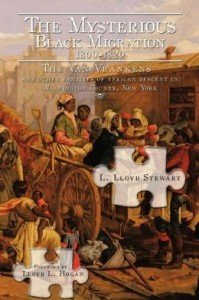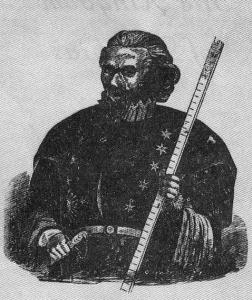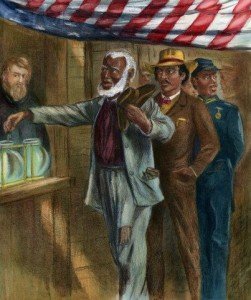 |
| Greater New England: Mid-19th Century Yankee Settlement |
This past May (2012), the small town of Cambridge in Washington County was host to a “summit”, of sorts, as folklorists and those allied professionals who work with the cultural arts gathered for an exchange of ideas.
The three day “Retreat” drew approximately sixty folklorists from throughout New England and the Mid-Atlantic region and was sponsored by several loosely affiliated groups: Folklorists in New England (FINE), the Mid-Atlantic Folklore Association (MAFA), and the New York Folk Arts Roundtable.
Organized by the New York Folklore Society, the New York State Council on the Arts’ Folk Arts Program, and the Mid-Atlantic Arts Foundation, the Northeast Folklorists Retreat presented multiple opportunities for participants to explore current issues of importance to those who pursue the documentation of culture and contemporary folkways.
Attendees included staff of the Folklife Center at the Library of Congress and the Smithsonian Institution’s Office of Folklife Programs- State Folk Arts Coordinators for New York, Maine, Rhode Island, Vermont, Massachusetts, and Connecticut- leaders from New York’s folklore institutions- and numerous cultural specialists who conduct their work under the auspices of public libraries, arts organizations, and public universities.
As defined in the American Folklife Preservation Act passed by Congress in 1976, American folklife means the traditional expressive culture shared within the various groups in the United States – familial, ethnic, occupational, religious, and regional. According to the definition, expressive folk culture, (which includes a wide range of creative and symbolic forms such as custom, belief, technical skill, language, literature, art, architecture, music, play, dance, drama, ritual pageantry, or handicraft) is mainly learned orally, by imitation, or in performance, and is generally maintained without benefit of formal instruction or institutional direction. As scholar Barre Toelken explains in The Dynamics of Folklore, (1979, Hougton Mifflin), “Folklore comes early and stays late in the lives of all of us. In spite of the combined forces of technology, science, television, religion, urbanization, and creeping literacy, we prefer our close personal associations as the basis for learning about life and transmitting important observations and expressions.”
Although still closely allied with the disciplines of comparative literature, history, and anthropology, the current discipline of folklore stands at an interesting juncture. In an era when twenty-first century globalization and the next “Big Idea” are often celebrated, folklorists are working hard to recognize local communities’ maintenance of cultural traditions. Because of its emphasis on cultural knowledge shared between and among groups, folklore has gained allies in contemporary movements that are coming to the forefront in American society.
Ideas which share folklore’s concerns such as the 100-mile or “locovore” food movement- “buy local” movements- the “Slow Food” movement- urban gardening- and “sustainability” are used by current community advocates as a lens to examine everything from energy to community infrastructure. Borrowing from these current shared concerns,” the 2012 Folklorists’ Retreat took as its theme, “Sustaining Culture: A Regional Conversation.” Besides providing an opportunity for folklorists to gain practical skills through sessions on audio documentation and digital formats (offered by Andy Kolovos, the archivist at the Vermont Folklife Center), the gathering provided an opportunity for those in attendance to share ideas and perspectives on issues relating to folklore, including definitions of “authenticity” and “sense of place”. Best practices for folklore programs involving cultural tourism, local collaborations, and arts in education were presented and participating folklorists wrestled with issues which arise when working with immigrant and refugee artists, or with presentational formats which use new forms of media.
Typically, folklorists gather annually under the auspices of the American Folklore Society or they gather in various regional groupings. This first ever Folklorists’ Retreat and Roundtable brought together organizations and individuals representing the entire Eastern Seaboard from Maine to Maryland, Washington DC to Niagara Falls. I am curious to see what comes of the resulting synergy.
Ellen McHale is Executive Director of the New York Folklore Society (founded in 1944) and has over 25 years of public sector folklore experience. She is also the folklorist for the National Museum of Racing’s Folk Arts project, documenting the predominantly Latino population in the backstretch/ stable area of the Saratoga Thoroughbred Racetrack through oral history interviews and photography.
 New York author L. Lloyd Stewart has recently published an extensively researched and documented book on African American history in New York State titled, The Mysterious Black Migration 1800-1820: The Van Vrankens and Other Families of African Descent in Washington County, New York.
New York author L. Lloyd Stewart has recently published an extensively researched and documented book on African American history in New York State titled, The Mysterious Black Migration 1800-1820: The Van Vrankens and Other Families of African Descent in Washington County, New York.







